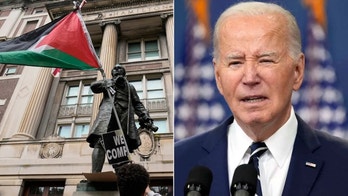Lawmakers in the House and Senate are scrambling to pass legislation to preserve the funding stream for the federal government, which, if nothing is done, will expire at midnight on Saturday, prompting a shutdown of the federal government. In the event lawmakers fail to reach a deal, old hands in and around the Capitol have begun looking to the past as prologue, to determine how the federal bureaucracy -- and Americans across the country -- would be affected by a government shutdown.
"The entire government doesn't shut down," cautioned former Rep. Martin Frost (D-Texas), who served during the bad old days of late 1995 and early 1996, when the federal government's funding ran out not once but twice. It was the second shutdown, which lasted from December 16, 1995 through January 6, 1996, that is best remembered, as it was the longest such disruption in U.S. history.
"A lot of people would be told not to report to work," Frost continued. "Members of Congress feel this immediately back in their districts, because people start calling and saying, ‘Am I going to get my Social Security check? Am I going to get my veterans check?' And members have a hard time reacting to that kind of pressure."
It is difficult to assess the total costs associated with a shutdown of the federal government, because much of the money calculated as "lost" in the '95-96 disruption was ultimately paid out, anyway. According to a report prepared by the Congressional Research Service in 2004, the shutdown of November 14-19, 1995 resulted in the "furlough" of approximately 800,000 federal employees. That is to say: Government workers from a broad spectrum of agencies and departments, in and out of the nation's capital, were placed on a "non-duty, non-pay" status. The ‘95-96 shutdown, though longer in duration, caused the furlough of at least 284,000 federal workers.
Nearly half a million staffers, deemed "essential" -- such as those related to national security, public health and safety, and law enforcement and prison control -- continued to work, as required by law, on a non-pay basis (and were compensated later by the legislation that ended the impasse). Still other kinds of federal employees, such as presidential appointees and members of Congress, were, and remain, automatically exempted from furloughs.
So "essential" services of the federal government continued -- a fact that should dispel images, in the current climate, of everything in America grinding to an abrupt halt, like in a movie about nuclear war: men hailing taxis, children playing with jacks, bulldozers moving large mounds of dirt.
So what agencies were actually affected? The White House Office of Management and Budget (OMB) was responsible for informing workers not to report for work. Nearly 400 National Park Service sites were closed, turning away 7 million visitors and $14 million in tourism revenue. The clinical center at the National Institutes of Health rejected new patients, and the Centers for Disease control temporarily stopped monitoring the spread of worrisome diseases like HIV/AIDS and the flu. At the State Department, some 200,000 applications for passports by American citizens were shelves, along with up to 30,000 applications for visas by foreign nationals. Veterans services were sharply curtailed, and a large volume of federal contracting ground to a halt.
"Most of the concern was right in Washington, D.C., where most of the employees of the federal government are concentrated," recalled former Rep. Robert Walker (R-Penn.). "There were some other places around the country, where you have concentrations of federal employees -- you have NASA facilities and all that -- where they also had some concerns. In my congressional district, I wasn't hearing much at all. The people there kind of understood that this was something involved with the way we financed the government, and in my conservative Pennsylvania district, we weren't hearing a lot at all from people that this was bothering them."




